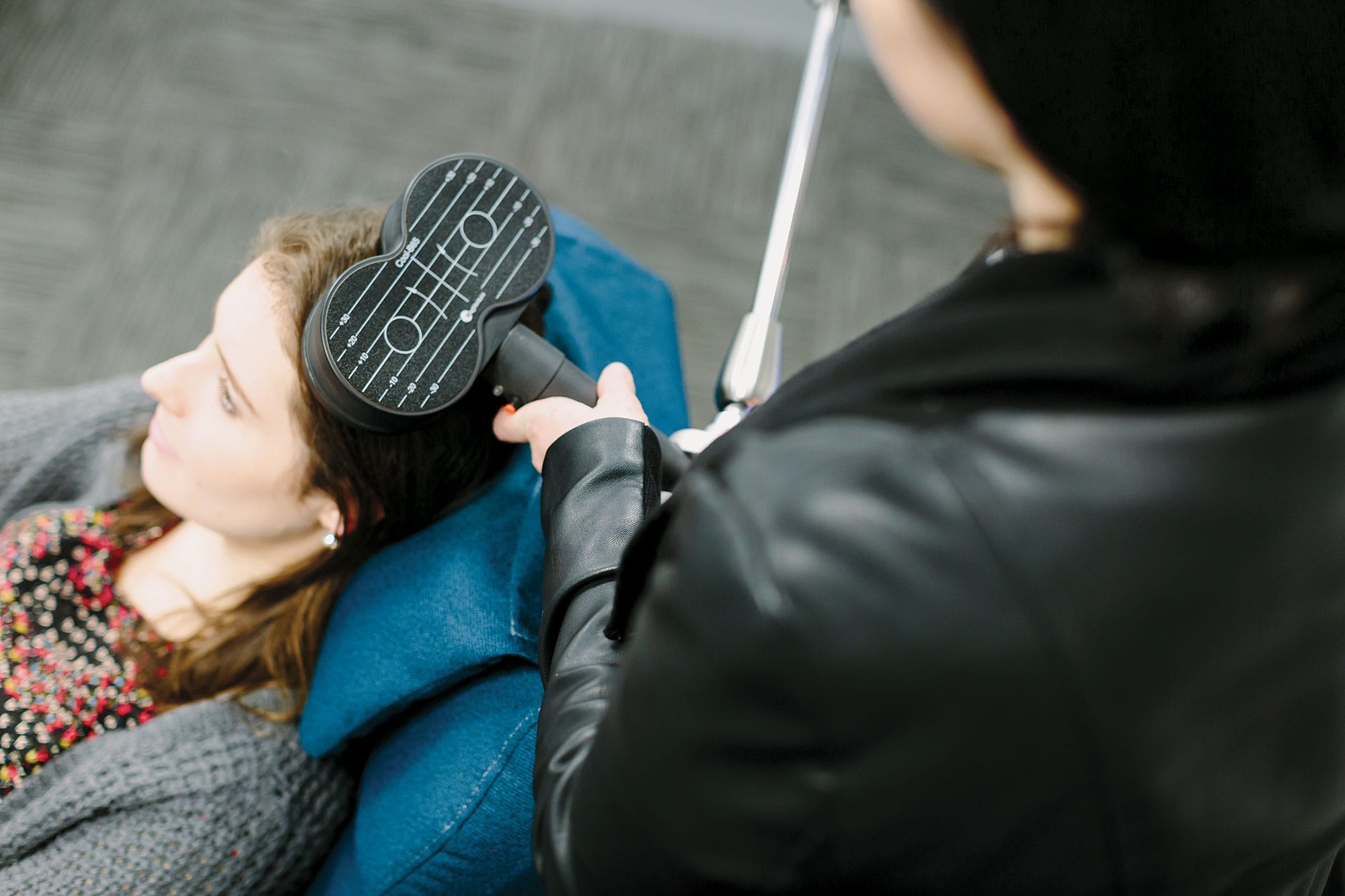
A long, long time ago in Rome – and we’re talking a very long time ago – the emperor Claudius had a doctor by the name of Scribonius Largo. He was a very clever man. Fond of prescribing opium and saffron for everyday ailments and pustules, but very clever nonetheless, for the times. He wrote down most of his ‘cures’ in 46AD.
One of his questions was what to do about headaches and, even worse, afflictions of the mind, the brain. By now the Romans, Greeks, Egyptians and Arabic peoples knew about fish – catfish and rays – that gave a shock when touched. This was an electric shock – but they didn’t yet know what electricity was. Scribonius prescribed a zap from electric fish, applied directly to the head.
“I think what we’re doing now is safer and more effective,” laughs Associate Professor Kate Hoy, the deputy director of the Therapeutic Brain Stimulation division of the Monash Alfred Psychiatry Research Centre. “But it is certainly an old idea in medicine.”
The division – headquartered in St Kilda Road near the Alfred Hospital – is the best of its kind in Australia and among the top brain stimulation research institutions in the world, leading the way in the application of brain stimulation therapies for mental illness, pain disorders, Alzheimer's disease and autism. The group recently has expanded to work over two sites, with its head, Professor Paul Fitzgerald, also now the new Professor of Psychiatry at Epworth HealthCare.
The use of Transcranial Magnetic Stimulation (TMS) to help treat depression is now an approved medical treatment, due in no small part to the unit’s work since the early 2000s, when it was just a small research centre based at Dandenong Hospital. The division now has 30 staff and students. Associate Professor Hoy specialises in cognitive disorders with a growing focus on dementia. Her senior colleagues are Dr Bernadette Fitzgibbon, who specialises in pain and affective neuroscience, and Professor Fitzgerald, who's led the development of brain stimulation treatments in mental health conditions including depression, schizophrenia and obsessive compulsive disorder.
His research on TMS in depression was summarised in a 2016 study revealing that it helped more than one third of 1132 patients with severe depression go into remission.
He says his team is unique because of its diversity. “We're unusual in that we are made up of psychiatrists, psychologists, neuroscientists, biomedical engineers, and computational scientists and more. We're all ultimately working towards better treatments for patients with mental health problems.”
“I've personally treated 1500 patients, and it works really well for many of those for who nothing else – drugs and counselling – is working.”
It’s all a long way from the electric fish on the afflicted head, but is also not that far removed. “It’s Faraday’s Law,” says Professor Fitzgerald, referring to Michael Faraday, the English scientist who discovered electromagnetic induction in 1831. “If you apply a changing magnetic field to something that conducts electricity, you'll induce a current. Neurons in our brain are conductors, and it basically makes the nerve cells fire. We're trying to stimulate the nerve cells literally thousands of times. The more you drive particular circuits, the more you'll reinforce particular connections.”
The therapy is given to patients in-house at the unit’s offices via a figure-8-shaped coil on their head. It's non-invasive with little or no side-effects. It's also more pleasant than a wet fish, and smells better. “I've personally treated 1500 patients, and it works really well for many of those for who nothing else – drugs and counselling – is working.”
The next steps
But it's what will happen next with brain stimulation, mental health and pain that is really exciting, and spurs these researchers (who have already worked together for 15 years) towards the next generation of treatments.
They want to try and accelerate TMS so it works faster on patients with depression, which helps both clinicians and patients. Currently the team is also working on six other kinds of brain stimulation for eight separate disorders, including obsessive compulsive disorder (OCD), which, according to Professor Fitzgerald, is under-researched.
“It’s a pretty unknown condition, but it affects more than one per cent of the population. Half of those don’t respond to treatment and are substantially disabled. There’s minimal treatment development going on in the area. It should be highly amenable to brain stimulation because the circuitry is well-known, we know where the targets are. We're hoping to grow this over the next couple of years.”
Mind and body
Dr Fitzgibbon’s work, meanwhile, on the nexus between the mind and the body with pain, is also advancing quickly, and is fascinating. She's working closely with chronic pain disorders without any known causes, as well as investigating how life experience and an individual’s situation may influence the experience of pain. How much does belief and expectation have to do with certain kinds of pain in certain people? she asks. How much is the mind and the psychology of the patient impacting on their biology, and their body?
“I'm very interested in the societal implications of this research,” she says. “The evidence base is not necessarily there for a lot of the pain medications that are prescribed. Public education about brain stimulation is needed, because in terms of society, people are comfortable with medications. We want to get these techniques discussed and normalised.”
The Monash Alfred Psychiatry Research Centre (MAPrc) is investigating whether transcranial magnetic stimulation (TMS) can improve the cognitive symptoms of Alzheimer’s disease. The researchers are seeking men and women aged between 50 and 95, with a diagnosis of mild to moderate Alzheimer’s disease. For more information, contact research coordinator Dr Melanie Emonson on (03) 9076 9864, or email melanie.emonson@monash.edu.





